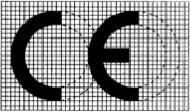Manufacturers play a crucial role in ensuring that products placed on the extended single market of the European Economic Area (EEA) are safe. They are responsible for checking that their products meet EU safety, health, performance and environmental protection requirements. It is the manufacturer’s responsibility to carry out the conformity assessment, set up the technical documentation, issue the EU declaration of conformity, and affix the CE marking to a product. Only then can this product be traded on the EEA market.
If you are a manufacturer, you have to follow these 6 steps to affix a CE marking to your product
- Identify the applicable directive(s) / regulation(s) and harmonised standards
The directives and regulations aligned with, or based on the reference provisions of Decision 768/2008/EC, are listed here.
- Verify product specific requirements
EU legislative acts based on the ‘new approach’ and ‘new legislative framework’ policies, providing for the CE marking, have been designed in such a manner that they cover, within their respective scope, all requirements for products from each of the sectors. However, it is possible that more than one regulation or directive applies to the same product. Furthermore, other EU legislation (such as horizontal legislation on chemicals or on the environment) can apply.
- Identify whether an independent conformity assessment (by a notified body) is necessary
For products that present higher risks, the manufacturer cannot check safety alone. In these cases, an independent organisation, specifically a notified body appointed by national authorities, has to perform the safety check. The manufacturer may only affix the CE marking to the product after this.
To find the notified bodies appointed by the EU countries to carry out conformity assessment, please use NANDO – the ‘new approach notified and designated organisations’ database, where you can search for notified bodies by legislation or by country.
- Test the product and check its conformity
A notified body verifies, in most cases, both the quality management of the manufacturer, the design of the product and its compliance with the ‘essential requirements’. The manufacturer may also choose another conformity assessment route. In that route, the notified body verifies the product type for the conformity with the essential requirements and the conformity of the final products with the type. After successfully completing the assessment, the notified body issues (a) certificate(s) indicating what has been verified.
The manufacturer must draw up the EU declaration of conformity (DoC) to declare his sole responsibility for the conformity to the relevant regulation or directive. The DoC must include the manufacturer’s details such as name and address, essential characteristics of the product, if applicable the identification number of the notified body as well as a legally binding signature on behalf of the organisation.
- Draw up and keep available the required technical documentation
Prior to submission of an application to the notified body or, at the latest, when placing the first device of the respective type on the market, the manufacturer must establish the technical documentation. The technical documents must enable the assessment of the conformity of the appliance with the requirements of the legislation.
The manufacturer or his authorised representative established in the European Union is required to keep copies of the technical documentation for a period specified in the applicable regulation or directive.
- Affix the CE marking and draw up the EU declaration of conformity (27 KB)
Once the necessary steps have been successfully completed, the CE marking must be affixed to the medical device. The CE marking must be placed visibly and legibly on the product or, if not possible due to the nature of the product, be affixed to the packaging and the accompanying document. The CE marking shall consist of the initials 'CE' taking the form below.
The various components of the CE marking must have the same vertical dimension, and may not be smaller than 5 mm. If the CE marking is reduced or enlarged, the proportions given in the above graduated drawing must be respected.
When the product is subject to other EU regulations or directives covering other aspects and which also provide for the CE marking, the accompanying documents must indicate that the product also conforms to those other legislative acts.
If a notified body has been involved in the conformity assessment procedure, its identification number must also be displayed.
These 6 steps may differ by product as the conformity assessment procedure varies. Manufacturers must not affix CE marking to products that do not fall under the scope of one of the regulations or directives providing for its affixing.

